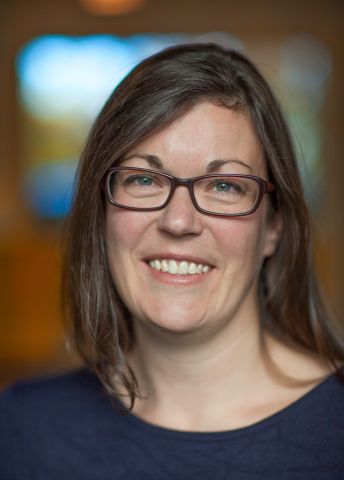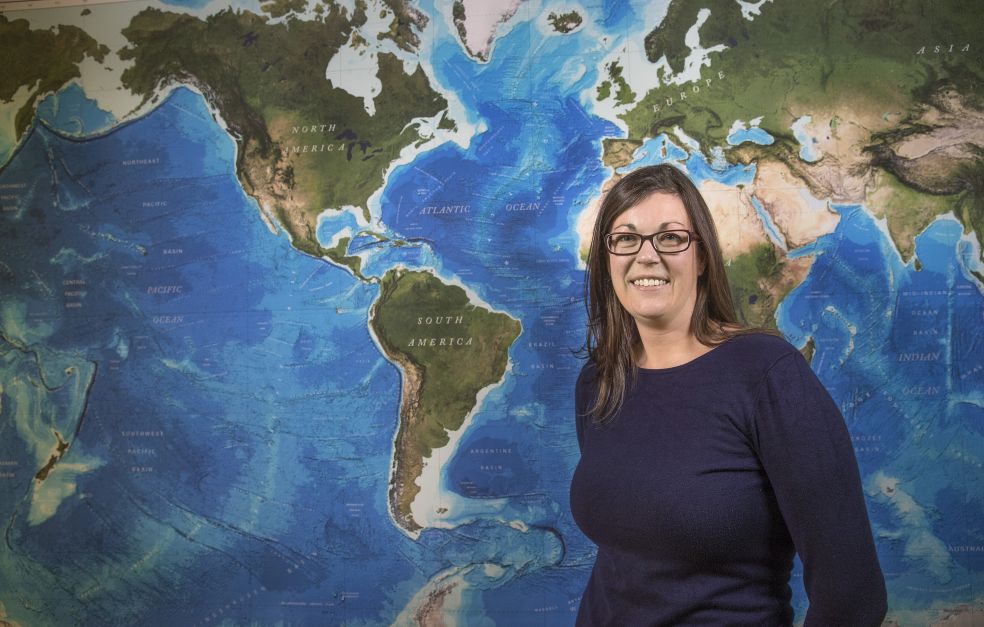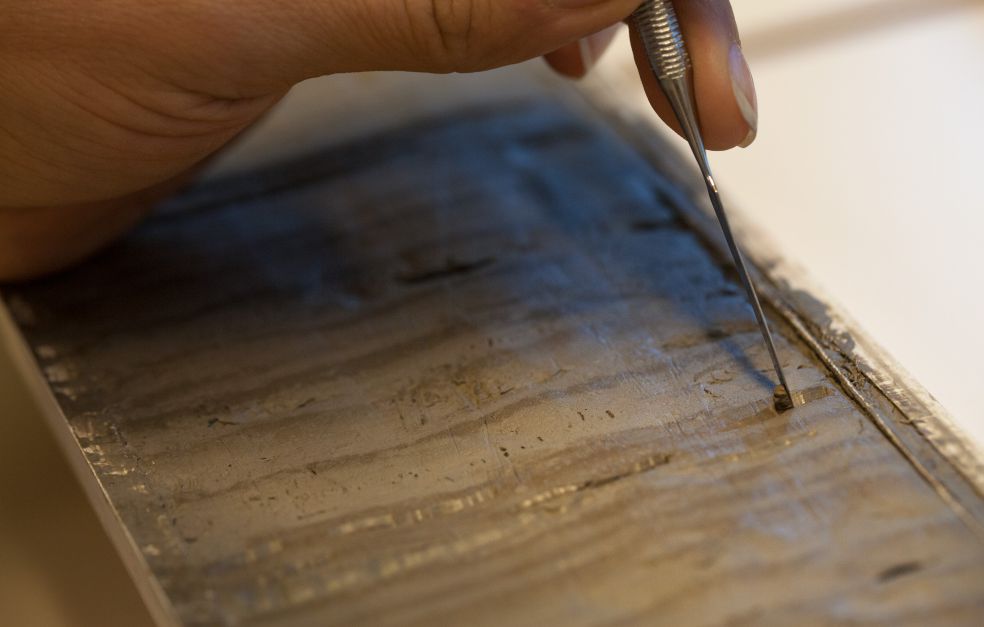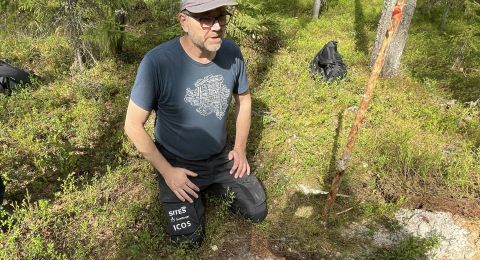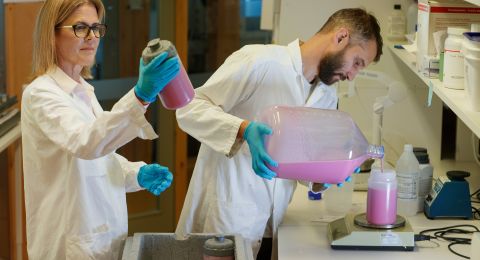Some parts of the ice sheets extending into the waters around Antarctica and Greenland appear to be undergoing rapid changes as the climate warms. Why are some ice sheets more unstable and sensitive to warming than others? Perhaps the answer lies in the tracks left by former ice sheets. This, at any rate, is what Sarah Greenwood hopes. She is comparing geological data from the Baltic sea bed with similar data from the Antarctic.
Sarah Greenwood
PhD, Physical Geography
Wallenberg Academy Fellow 2016
Institution:
Stockholm University
Research field:
The impact of small-scale geological processes on the stability of marine ice sheets
Today the largest ice sheets are found in Greenland and Antarctica. They can be up to three kilometers thick and hundreds of kilometers across. From a geological viewpoint, it was not so very long ago that Scandinavia was covered by an ice sheet just as large – only 10,000-12,000 years ago, in fact. These huge ice sheets, particularly those covering marine areas, are the subject of Sarah Greenwood’s research.
“Glacial geology is really exciting. We study enormous continental systems. The aim of my research is to understand how an ice sheet works, and the processes that have shaped the marine landscape since the last glaciation.”
Sarah Greenwood joined Stockholm University from the University of Sheffield in the United Kingdom, having completed her doctoral thesis on the Irish ice sheet. She does not feel she made a conscious choice to go into research.
“It’s more a natural consequence of doing a job I enjoy. As a glacial geologist, I get to do fun things and travel to interesting places. And I’ve always loved the outdoor life.”
“It gives me the opportunity to set up my own research team for the first time. The grant will enable me to pursue research ideas that I have wanted to develop for a long time.”
Ice-age clues
Greenwood mentions the concern that parts of the ice sheets extending into the seas around Antarctica and Greenland appear to be undergoing rapid changes. Many researchers want to know why some outlets of these ice sheets are more unstable than others. She elaborates:
“Warmer oceans melt ice more quickly when it reaches the sea, especially where glacier ice begins to float. These floating parts act as a plug holding back the rest of the ice from the continent’s interior, and some have begun to weaken and thin out. More icebergs calve, and more meltwater is produced. Yet some parts of the ice sheets are extremely stable.”
Better knowledge of the course of events affecting ancient ice sheets will enable us to predict how current global warming will impact the ice sheets and climate of today. Sarah Greenwood explains:
“The last glacial period was followed by a period of rapid warming and rising sea levels. It’s interesting to see what happened, and what time scales were involved. The question is whether they are relevant to the modern-day time scale, or whether the processes take much longer.”
In a five-year project funded by the Knut and Alice Wallenberg Foundation, Sarah Greenwood is examining the geological processes that triggered deglaciation, starting in the southern Baltic Sea about 16,000 years ago.
“We will be studying the glacial tracks left on the seabed. We already know a great deal about the evolution of the terrestrial landscape in Scandinavia – several of the pioneers of glacial geology were Scandinavians. But the Baltic Sea is a gigantic blank spot on the map. We have no detailed knowledge of its seabed morphology.”
Patterns in bottom sediment
At the bottom of the Baltic Sea there are shapes and scars in the sediment that can be used to read the story of how the ice flowed across the seafloor, where it ended, how it cracked, and where the meltwater flowed.
“These tracks tell us something about the appearance and form of the ice sheet, and now we have the technology to actually detect - and interpret - these patterns in great detail. We will be able to create a topographical image of the entire sea bed.”
Sarah Greenwood will be using Stockholm University’s new research vessel, the R/V Electra. It is fitted with state-of-the-art geophysical instruments, including several types of sonar, a technique that uses sound waves, as well as equipment for sediment sampling.
“We can now gather really high-quality data, and have a unique opportunity to fill in some of the blanks on the glacial geological map,” Greenwood explains.
The ship is stationed in the Baltic Sea, at the university’s field station on the island of Askö. Data will be gathered during the summers, when the sonar is undisturbed by sea ice. Back at the lab, geotechnical tests will be performed on the meters-long sediment core samples collected from the seabed. Greenwood’s research team will be able to use these samples to create a chronology of the sediment strata, and understand the time scale with the help of radiocarbon dating.
Unstable ice sheets
One key question in the project is how representative the results obtained are for other areas where marine ice sheets exist or have existed.
“It’s essential to collaborate with other researchers and compare the dynamics and processes that we observe at various sites. When we know what’s important, we can begin to ask questions and create models that we can experiment with. What happens to the ice system if we change a parameter?”
Sarah Greenwood has spent several years researching the Antarctic, where projects similar to the present Baltic project have been carried out, and spent two months on a U.S. icebreaker.
“The Antarctic is fantastic, and I really want to go back. We will be comparing the data we collected there with Baltic data. We can use the insights we have gained into earlier events, and hopefully learn something about the present situation.”
Text Susanne Rosén
Translation Maxwell Arding
Photo Magnus Bergström
